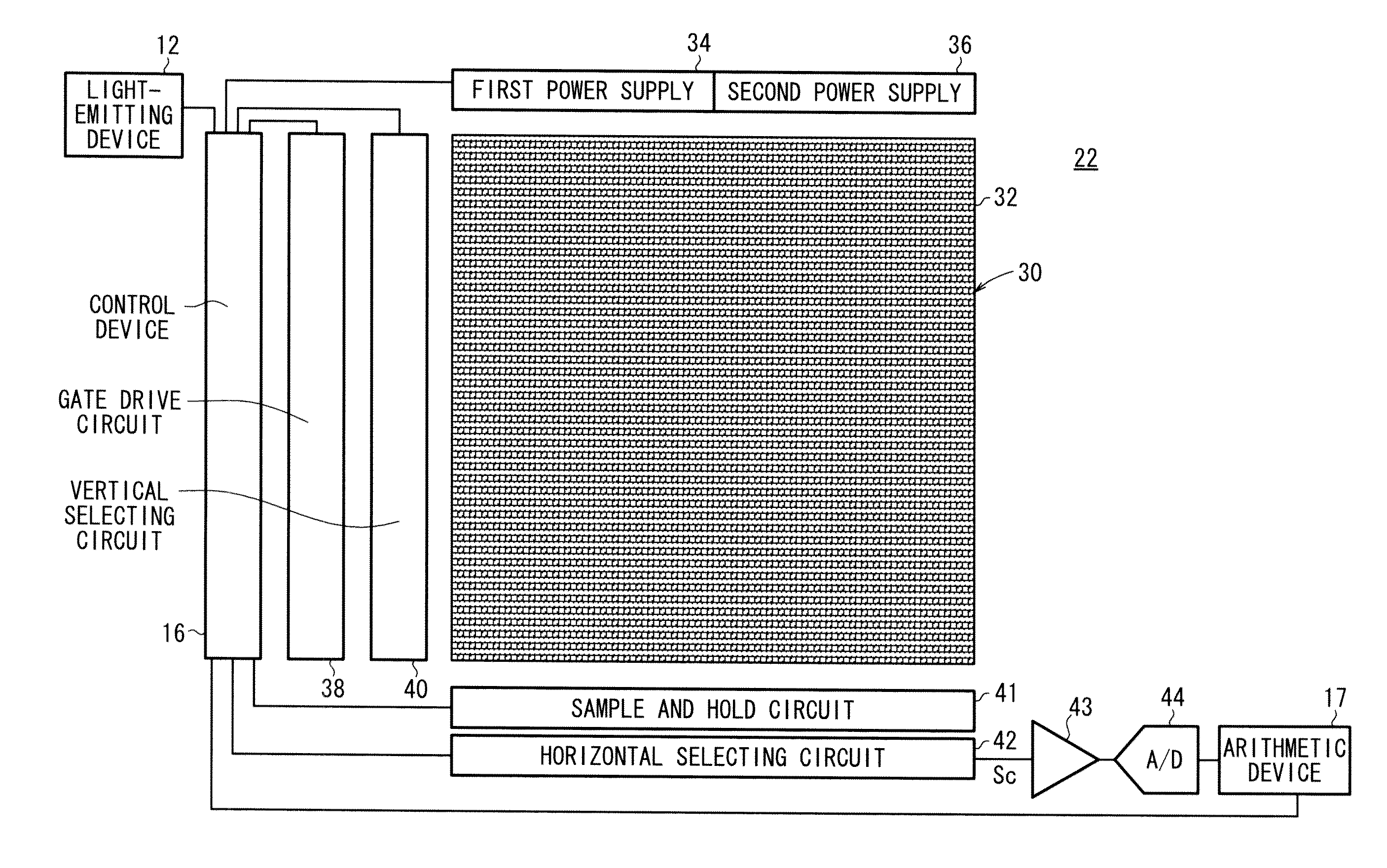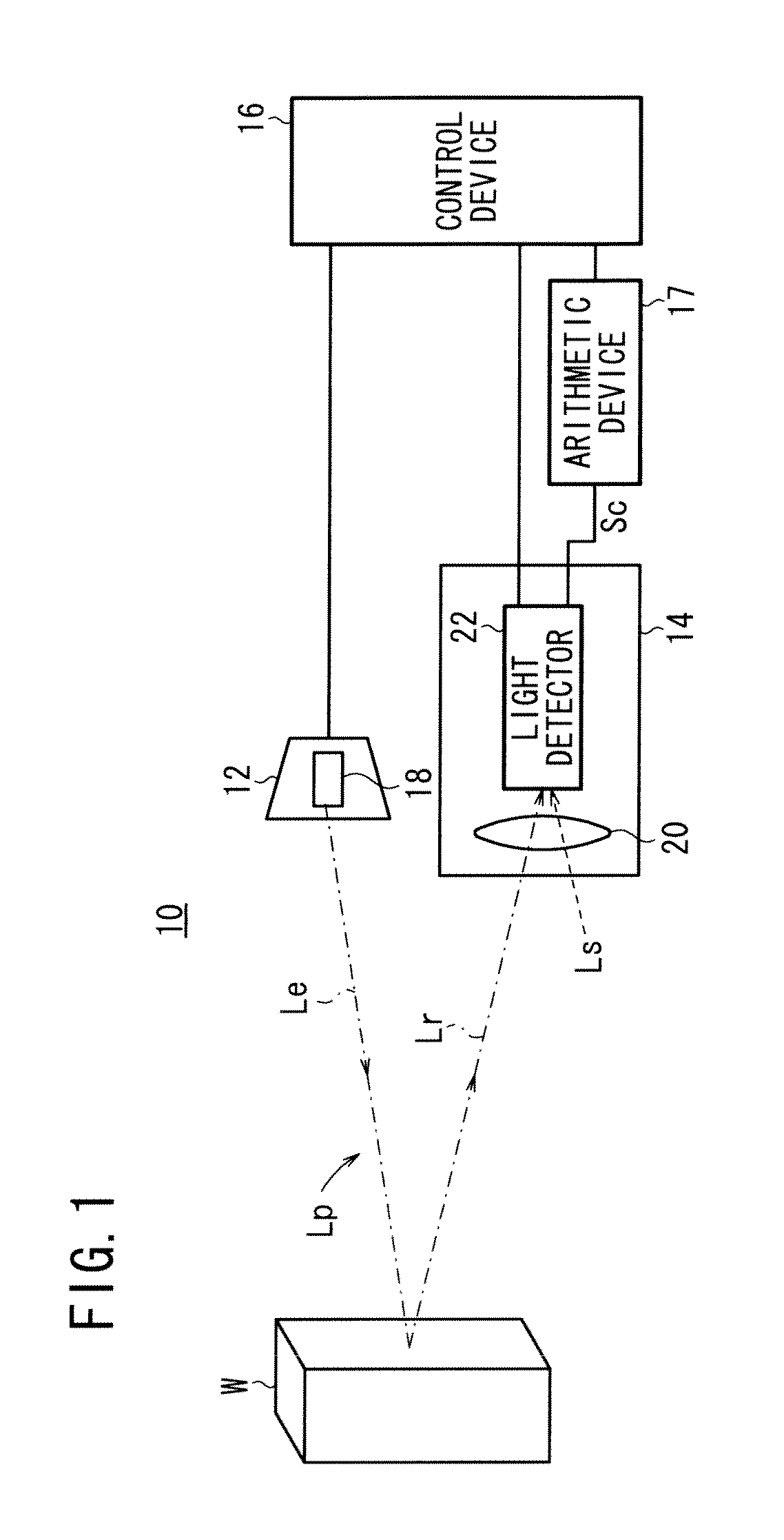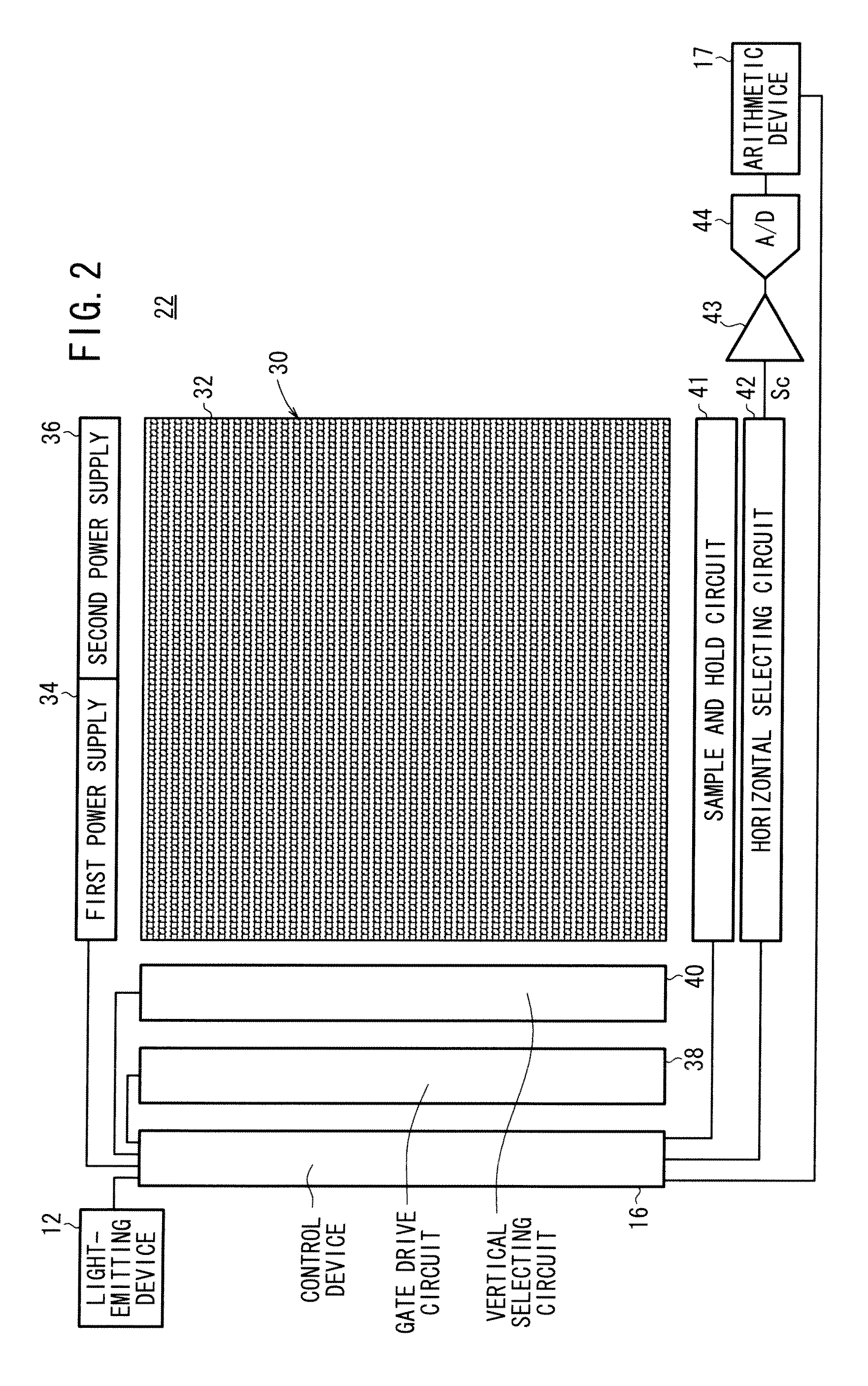Distance measuring system and distance measuring method
a distance measurement and distance measurement technology, applied in distance measurement, surveying and navigation, instruments, etc., can solve the problem that the rangefinding system does not perform processing in view of the effects of ambient light, and achieve the effect of narrowing increasing the dynamic range of the rangefinding system, and increasing measurement accuracy
- Summary
- Abstract
- Description
- Claims
- Application Information
AI Technical Summary
Benefits of technology
Problems solved by technology
Method used
Image
Examples
embodiment
A. Embodiment
[0035]A rangefinding system according to an embodiment of the present invention will be described below with reference to the drawings.
1. Arrangement of the Rangefinding System 10:
(1) Overall Arrangement of the Rangefinding System 10:
[0036]FIG. 1 is a block diagram of a rangefinding system 10 according to an embodiment of the present invention. The rangefinding system 10 serves to acquire a three-dimensional image using distances that are measured based on output signals from pixels 32 of an image sensor 30, to be described later. The rangefinding system 10 includes a light-emitting device 12, a light-detecting device 14, a control device 16, and an arithmetic device 17. The rangefinding system 10 operates such that, in response to a command from the control device 16, a light emitter 18 of the light-emitting device 12 emits pulsed light Lp, and the pulsed light Lp is reflected by an object W and exposed to the light-detecting device 14. Based on a command from the cont...
PUM
 Login to View More
Login to View More Abstract
Description
Claims
Application Information
 Login to View More
Login to View More - R&D
- Intellectual Property
- Life Sciences
- Materials
- Tech Scout
- Unparalleled Data Quality
- Higher Quality Content
- 60% Fewer Hallucinations
Browse by: Latest US Patents, China's latest patents, Technical Efficacy Thesaurus, Application Domain, Technology Topic, Popular Technical Reports.
© 2025 PatSnap. All rights reserved.Legal|Privacy policy|Modern Slavery Act Transparency Statement|Sitemap|About US| Contact US: help@patsnap.com



